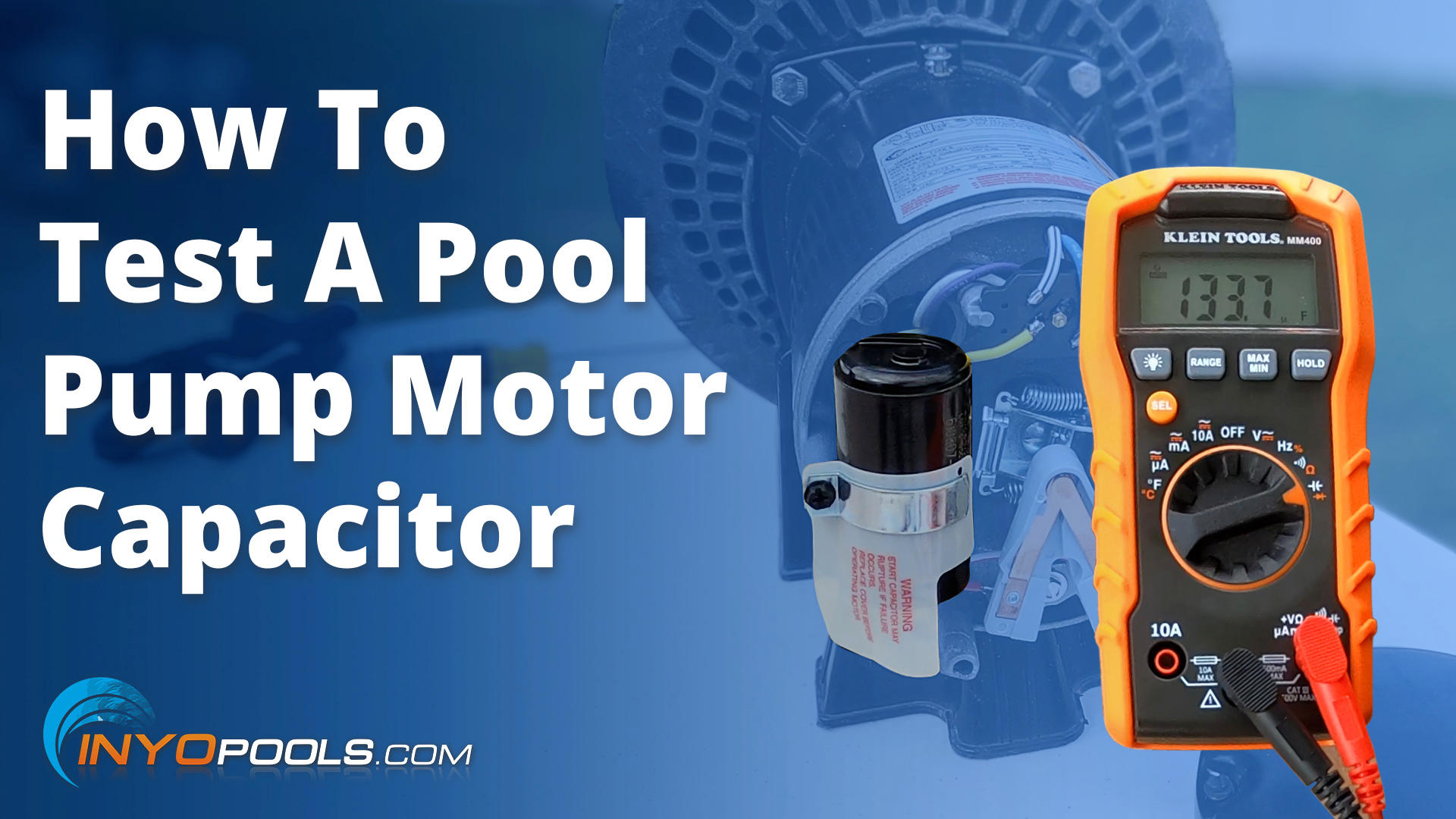In this video, we take a look at how to test a pool pump motor capacitor with a multi-meter. If your pool pump motor makes a humming sound when you try to turn it on, then following these steps can help you determine if you need a new capacitor or a new motor.
Where Is the Motor’s Capacitor?
- The backend of the motor, next to terminal connections. Example: UST1102
- The hump on top of the motor, sometimes called the capacitor dog house. Example: B2854
Not all motors have a serviceable capacitor; many above ground pool pump motors do not have a capacitor under the motor endcap or hump.
Steps to Testing Capacitor
- Shut off power to motor at the breaker.
- Remove endcap cover and/or in the capacitor dog house.
- Unmount the capacitor from the back of the motor.
- Use an insulated screwdriver to discharge any residual charge from the capacitor by crossing both terminals with the screwdriver tip.
- Take a picture of capacitor wiring to ensure rewiring is done correctly.
- Remove wires from the capacitor’s terminal leads using needle-nosed pliers.
- Check capacitor for damage or defects, specifically scorch marks, melting, or bulging of the barrel.
- Set Multimeter to Capacitance for a test. Also, check the capacitor barrel for the microfarad rating.
- Run Capacitors list a single microfarad rating; for example, 25 MFD, and 30 MFD. On the other hand, start capacitors list a range of microfarads like 124-149 MFD or 161-193 MFD.
- Hold the multimeter’s test leads to capacitor terminals to begin the test. It may take a few seconds for the meter to show a reading. Note the Reading.
- Then flip the leads to test the terminals in reverse. Note the Reading.
- Compare readings to the capacitor’s ratings. For example, the start capacitor is rated 124-149 MFD; the two test results were 133 and 132.8. Therefore, the capacitor has passed the capacitance test. However, the capacitor failed the test if it was outside of the listed range.
- For Start Capacitors, you’ll see a single rating with a plus or minus percentage; Your readings will need to fall within this margin to pass. For example, a run capacitor rated for 30 MFD, ± 6%; your capacitor would need to fall between 28.2 – 31.8 MFD.
- If your capacitor fails its capacitance test visit Inyo Pool’s motor parts section to find your replacement Run and Start capacitors
Related Article – How To Find the Right Capacitor For Your Pool Pump Motor








Leave a Reply